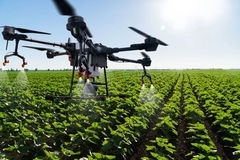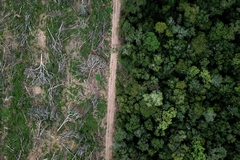EU Commission Further Reviews Control Measures to Combat African Swine Fever
16 Sep 2014 --- An update of EU control measures to combat the spread of African Swine Fever (ASF) was endorsed by Member State experts on Friday, 12 September 2014. These regionalised restrictions, affecting, to differing degrees, Lithuania, Latvia, Poland and Estonia, identify four levels of risks to animal health, redefine the regionalisation and differentiate between these restricted zones in accordance to the level of risk.

The four levels of restrictions, in order of severity are: a) stringent restrictions in Sardinia because ASF is endemic in pigs and wild boar, b) a re-demarcation of the infected area in Lithuania and Latvia where the disease is present in wild boar and also in domestic pigs but not yet stabilised, c) a re-demarcation of some areas in Lithuania, Latvia, Poland and Estonia where the disease was found mainly in wild boar and d) an additional zone adjacent to the zones mentioned above to prevent the further spread of the disease. Two cases of ASF in wild boar have been recently detected in Estonia in zones already under restriction, which is adjacent to the restricted zone in Latvia where cases in wild boar and backyard pig holdings were reported over the past few weeks. The new boundaries take account of these recent findings. Since January 2014, a total of 39 outbreaks occurred in pigs and 87 notifications in wild boar occurred in these countries.
African swine fever (ASF) is a devastating infectious disease of pigs, usually deadly. No vaccine exists to combat this virus. It does not affect humans nor does it affect other animal species other than pigs and wild boars. It can be transmitted either via direct animal contact or via dissemination of contaminated food (e.g. sausages or uncooked meat). See the Description of the disease box below for more information.
The European Union has laid down prevention and control measures to be applied where African swine fever is suspected or confirmed either in holdings or in wild boars. These include information measures and measures to prevent and eradicate the disease. The overarching piece of legislation providing the tool for the control of African swine fever in the EU is Council Directive 2002/60/EC of 27 June 2002.
NEW In this framework, new specific regionalisation measures have been taken with respect to evolution of the ASF situation in the EU. Commission Implementing Decision of 27 March 2014 (2014/178/EU), which was updated on 8 July, on 31 July 2014 and on 28 August 2014, provides the animal health control measures relating to ASF in certain Member States.
Document SANCO/7138/2013 contains Guidelines on surveillance and control of ASF in feral pigs and preventive measures for pig holdings. The aim of this document is to provide guidance to the Member States in controlling ASF when the disease is suspected or confirmed in feral pigs.
These guidelines are based on:
• the provisions of Council Directive 2002/60/EC, and in particular of Articles 15 and 16;
• Chapter IV(H) of the Annex to Commission Decision 2003/422/EC;
• the EFSA Scientific Opinion of the Panel on AHAW on the control and eradication of Classic Swine Fever in wild boar;
• the EFSA Scientific Opinion of the Panel on AHAW on African swine fever.
The EU legislation referenced above is fully in line with the OIE international standards. Nevertheless, in order to ensure a higher level of animal health protection, the EU goes beyond the OIE requirements and applies stricter standards. In the current application of regionalisation in Lithuania, Poland and Latvia, for example, no pigs, their semen, embryos or ova are allowed to be moved from the infected area.











